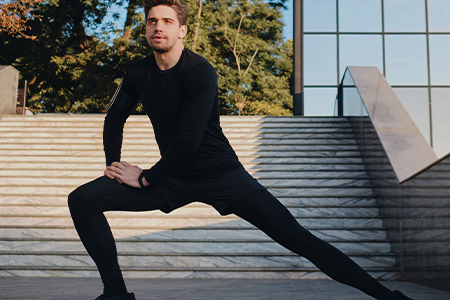Believe it or not, there are actually several unexpected variables that affect the success and efficiency of our workout routine without us even thinking about it. These aren’t so much the ‘internal’ issues such as our weight, metabolism or the like, but more around when we work out and how we split up our exercise. An often asked question is if there is a ‘best” time to work out. There are some answers but it’s not as straightforward as one might think.
Generally speaking, most fitness experts and nutritionists suggest working out in the afternoon, but this is based on some assumptions and caveats about lifestyle. Assuming that the person working out is a healthy man with a ‘three meals a day’ routine, the reason behind the suggestion of an afternoon workout is because, by this time, you’ve got two meals in your system, both of which are not sitting in the belly and are already being broken down and metabolised. Whenever you eat, your blood sugar levels rise in anticipation of burning it off. This is why many people will have a big lunch and then ‘crash’ in the afternoon as they experience a blood sugar level drop and the body starts to do its work breaking the food down. So, for that same reason, this is the best time to jump in and take advantage of all that extra glucose in the system; your body is literally expecting you to work it off and so your body will be in ‘exercise mode’. You’ll have more stamina, and at the end of the workout, will feel much more rested.
However, working out in the afternoon doesn’t just revolve around diet and metabolic processes. It also means that (once again, making some assumptions) you can spend the most amount of time regenerating and repairing, ready for the next round. If a normal male works a standard pattern, eats three meals a day and sleeps around 7-8 hours a night, this means that an afternoon workout leaves time for a healthy meal in the evening to replenish lost carbs and calories from the afternoon workout. It also means that the various microtears, strains, pulls and rips that we experience (many of which we don’t even notice) get not only 7-8 hours of rest time, but also the following morning into lunchtime where we’re not engaging in intensive physical activity.
As we said before, this relies on some assumptions. For shift workers or night workers, the workout routine can be adjusted in line with how one’s new ‘afternoon’ typically sits. For a night worker, the chance to hit the gym can actually induce a rested feeling and ensure that sleep is less likely to be interrupted; after all, we all know sleeping during the day is fitful and sporadic, even if you’re used to it as a shift worker.
Ultimately, it depends on the end goal. If you’re looking for maximum efficiency in your workout, then the aforementioned afternoon routine is arguably the best. If you’re training for a competitive event and need to combine rest with longer workout times, a split workout of the morning and evening is going to be more conducive to your goals. But remember that the body is a finely tuned machine which is still set to hunt, gather, eat and sleep the same way it was used thousands of years ago, when caveman would spend their days eating and hunting and the night recovering. Your body is calibrated in such a way that it thinks you should still be in this pattern, so work around it and you’ll notice increased stamina, better rest and a healthier metabolism.


